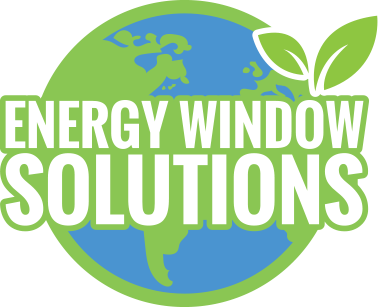
The Homeowner’s Guide To Energy Efficient Windows And Their Energy Solutions | Plano, TX
Modern homes and other infrastructures are being built with energy efficiency in mind. Similarly, older buildings are throwing out thin and outdated installations in favor of insulated ones. Nowadays, homeowners are prioritizing solutions that reduce heating and cooling costs while maximizing return on investment. Energy-efficient window solutions meet both requirements by providing added insulation. They also play a role in keeping your home comfortable.
Unfortunately, many homeowners struggle to find the right energy-efficient window solutions for their lifestyle and home. So if you are on the market for new windows, you might want to learn everything there is to know about energy-efficient solutions. This post explores what you need to know about energy efficient windows.
What Is an Energy-Efficient Window?
Energy efficient windows keep heated or cooled air from escaping your home. They come with increased insulation that helps reduce energy use and improve the comfort of your house. There are two main types of energy efficient windows – double pane and triple pane.
Double pane windows have two panes, are cheaper than triple panes but offer better value, and do a better job of regulating temperature than single pane windows. Triple pane windows have three panes and are the most expensive. It takes longer to recoup your investment with these windows, but they are great at regulating the indoor temperature and provide added security.
Aside from multiple panes, below are other features of energy efficient windows;
Quality Window Frame Materials
Energy efficient windows won’t do you much good if the frame material isn’t efficient as well. Materials often paired with energy efficient windows include vinyl, fiberglass, composite, wood, and clad wood. High-quality frame materials help reduce heat transfer and insulate the windows. This improves heating and cooling efficiency in your Plano, TX, home.
Window Gas Fills
Energy efficient windows often feature gas fills between the panes, providing further insulation. Common window gas fills include argon and krypton. The gasses used are odorless, non-toxic, and colorless.
Low-E Glass Coatings
Low emissivity coatings help your house retain heat in the winter and keep it out during the hotter months. They work by controlling how heat energy from the sun moves around. An exterior low-E coating can keep harmful UV and infrared light.
Window Spacers
Spacers are often installed on windows at the perfect in-distance between panes. They provide insulation around the window edges, further reducing heat transfer and improving energy efficiency.
How Much Can You Save with Energy-Efficient Window Solutions?
Single pane windows cannot beat the performance of quality energy efficient windows. Products with the Energy Star stamp of approval optimize energy efficiency through leakproof seals, low-E glass, maximum insulation, and UV ray protection.
Investing in energy-efficient window solutions translates to less work for your HVAC system. It also means you won’t have to worry about drafts or leaks.
The Department of Energy estimates that you can save $126 – $465 each year by using Energy Star-rated windows. The individual savings will vary depending on the windows you’re replacing, your house, and your location.
What Should I Know About Energy-Efficient Window Ratings?
Understanding the different ratings of Energy Star windows is essential. Here are the common terminologies you should know:
- U-Factor: The U-Factor measures a window’s heat loss rate and is measured in BTU/h.ft2. The higher the U-Factor, the more energy-efficient the window is. Look for a window with a rating of 0.25 and avoid anything with a rating higher than 0.4.
- R-Value: The R-Value is similar to the U-Factor rating, except it measures how well a window resists heat flow. Energy efficient windows use a form of gas such as argon between the panes to provide insulation. This increases resistance to heat, ensuring heated and cooled air remains inside your house. The higher the R-Value, the more efficient the window is.
- Low-E: Low emissivity plays a role in the overall U-Factor because it’s a part of measuring insulation. Low-E is a reflective coating that redirects heat back outside or into the house, ensuring that indoor heated or cooled air doesn’t escape.
- Solar heat gain coefficient: SHGC measures the amount of solar radiation transferred from the window’s exterior to the interior of your house. A lower SHGC rating indicates better window performance.
- Visible transmittance: It measures the amount of light that passes through a window. A low SHGC coupled with a high visible transmittance can maximize natural lighting in the house while minimizing solar damage.
- Air leakage is expressed as the equivalent of cubic feet of air passing through a square foot of window area (cfm/sq.ft). Infiltration through cracks in the window assembly can lead to heat loss and gain, which can affect the system’s efficacy. A lower AL rating indicates less air passing through the cracks in the window assembly.
- Condensation resistance: This is the measure of a product’s ability to resist the formation of condensation on the interior side. A higher CR rating indicates that the product is better at resisting condensation formation. This rating cannot provide an accurate condensation prediction, but it is a credible method of comparing the potential of different energy-efficient window solutions for condensation formation.
Can Energy-Efficient Window Solutions Boost the Value of Your Home?
Replacing your windows is one of the easiest and most affordable ways to boost the value of your house. If you plan on selling within ten years, investing in energy-efficient window solutions can help you sell your house for a higher price. It can attract more buyers who are looking to save on heating and cooling costs and even start a bidding war.
Which Window Styles Are the Most Energy Efficient?
Today’s market offers a variety of window styles to complement the style of your Plano, TX home, ventilation, and overall comfort. But not all of them are alike when it comes to energy efficiency. The two most energy-efficient window styles are the picture window and casement window.
Picture windows feature a huge glass area that provides unobstructed exterior views. Often installed in common living areas of the house, picture windows improve energy efficiency without compromising aesthetics.
Casement windows operate similar to doors, allowing for maximum ventilation. Still, they are perfect for boosting the thermal performance of your home with high insulating properties and state-of-the-art sealing technology.
Contact Us for Customized Energy Efficient Solutions
Energy Window Solutions can make a huge difference when they replace the windows in your home, especially when it comes to utility bills and comfort. These benefits are just a phone call away. If you are in Plano, TX, contact us today to schedule a free window consultation.


